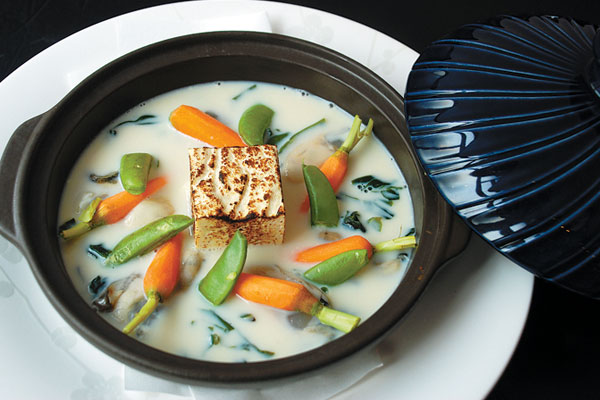Nabe at nobu
 |
|
Oyster Soy Milk Nabe has the lightest flavors and should always be enjoyed first. Provided to China Daily |
The Beijing winter gets misty with the steam of hotpots cooking all over the city, but there is one style that is very different from the others. Fan Zhen explores the fusion surprises from Nobu in the imperial city.
Chefs who grasp the essence of food know it is more than just food. It should not feed just the body but inspire the mind and please the soul. The newly appointed executive chef at Nobu Beijing is clearly one of the enlightened ones and he proves it with a selection of seasonal, simple but theatrical hotpots.
Related: Best tasting charcoal in Beijing
"The biggest difference between Chinese and Japanese-style hotpots is that we really try to keep it complex but light and elegant at the same time," Karu Wedhas says.
The traditional Chinese way is to cook different sliced raw ingredients in a steaming pot of basic broth over gas or charcoal. Japanese hotpots, or nabe, are not random, but are carefully put together, ingredients paired with the appropriate broths.
"We try to accentuate each individual flavor, with none overpowering the other, but everything being complementary so it all comes together. We look for balance," he says.
Everything is orchestrated, and every detail is looked into. Every flavor is a play on texture, while every texture suggests a flavor. That's how the chef tempts our taste buds.
The first nabe on the table is the lightest, with fresh juicy oysters barely blanched in an ivory-colored savory soy milk accentuated with bright orange baby carrots and fresh green sugar snap peas. Little squares of smoky seared silken tofu sit in the broth while plump oysters are the hidden delights just waiting to be discovered.
And, it is the soy milk that binds all together in this light, tasty prelude as we wait, an expectant audience, for more nabe.
















